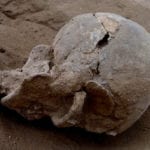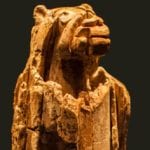 Weird Stuff
Weird Stuff  Weird Stuff
Weird Stuff  Our World
Our World 10 Ways Your Christmas Tree Is More Lit Than You Think
 Movies and TV
Movies and TV The 10 Coolest Stars to Set Sail on The Love Boat
 History
History 10 Things You Didn’t Know About the American National Anthem
 Technology
Technology Top 10 Everyday Tech Buzzwords That Hide a Darker Past
 Humans
Humans 10 Everyday Human Behaviors That Are Actually Survival Instincts
 Animals
Animals 10 Animals That Humiliated and Harmed Historical Leaders
 History
History 10 Most Influential Protests in Modern History
 Creepy
Creepy 10 More Representations of Death from Myth, Legend, and Folktale
 Technology
Technology 10 Scientific Breakthroughs of 2025 That’ll Change Everything
 Weird Stuff
Weird Stuff Ten Bizarre Facts About The Doge Meme
 Our World
Our World 10 Ways Your Christmas Tree Is More Lit Than You Think
 Movies and TV
Movies and TV The 10 Coolest Stars to Set Sail on The Love Boat
Who's Behind Listverse?

Jamie Frater
Head Editor
Jamie founded Listverse due to an insatiable desire to share fascinating, obscure, and bizarre facts. He has been a guest speaker on numerous national radio and television stations and is a five time published author.
More About Us History
History 10 Things You Didn’t Know About the American National Anthem
 Technology
Technology Top 10 Everyday Tech Buzzwords That Hide a Darker Past
 Humans
Humans 10 Everyday Human Behaviors That Are Actually Survival Instincts
 Animals
Animals 10 Animals That Humiliated and Harmed Historical Leaders
 History
History 10 Most Influential Protests in Modern History
 Creepy
Creepy 10 More Representations of Death from Myth, Legend, and Folktale
 Technology
Technology 10 Scientific Breakthroughs of 2025 That’ll Change Everything
10 Recent Discoveries That Explain Prehistoric Questions
Science long ago established that dinosaurs are awesome. Even though they’ve been gone for many millions of years, and left behind few—mostly incomplete—souvenirs of their existence, our base of knowledge of them is quite rich. However, any (seemingly) tiny discovery, at any time, can radically change our understanding of the past.
10Dinosaurs Were Neither Cold-Blooded Nor Warm-Blooded
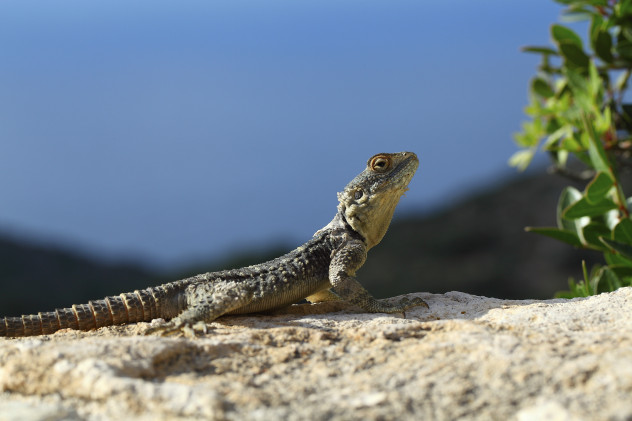
With a few exceptions, such as tuna and leatherback turtles, we’ve been drilled since childhood that animals are either distinctly cold-blooded or warm-blooded. We mammals, along with birds, are endotherms and we keep ourselves warm through metabolic processes—an energetically expensive survival strategy. However, it allows us to live across a range of environments. Ectotherms, such as reptiles, have poor internal heating mechanisms—they expend less energy, but suffer the inconvenience of having to sun themselves for warmth.
The dinosaur, translated as “fearfully great lizard,” was obviously cold-blooded because of the whole lizard thing, right? Kind of—but no, not really. Scientists have recently found that they belonged to a weird separate class of reptile, and were neither warm-blooded nor cold-blooded. In fact, they fell right smack-dab in the middle of the metabolic spectrum, quite unlike any other living creature. They are dino-blooded, or “mesothermic,” as a team from the University of New Mexico has dubbed them.
To ascertain the long-dead dinosaurs’ metabolism, scientists used a familiar strategy—paleontologists counted the rings on fossilized bones, as if they were dating a tree. Analyzing a range of bones allowed for an estimation of growth rates, and from that the team at UNM inferred metabolic rates and whether the animal was warm-blooded or cold-blooded.
This middle-of-the-road metabolism gave dinosaurs an exploratory advantage: They required fewer calories than similarly sized mammals and were vastly more mobile than other reptiles, such as crocodiles.
9Oldest Dinosaur Ever Discovered
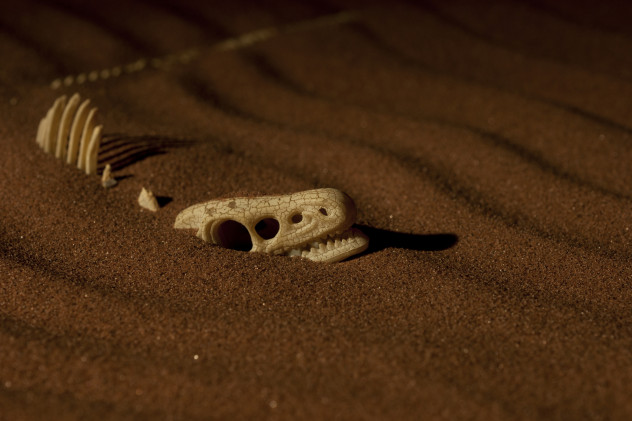
It was believed that dinosaurs popped up during the Late Triassic period, and quickly proliferated into all the terrible forms we know today. However, fossilized remnants from a Labrador-sized individual with a 1.5-meter (5 ft) tail are pushing back the dinosaur timeline by 10–15 million years. Other horrible reptilians, like crocodiles, were thriving during the Middle Triassic period (around 240 million years ago), but it seemed that dinosaurs proper didn’t appear for at least another epoch.
That is, until the (re)discovery of Nyasasaurus parringtoni—the most ancient dinosaur on record. An even marginally complete skeleton still eludes us, but paleontologists can do amazing work with very little material. In this case, they’ve reconstructed the animal using an arm bone and a few vertebrae. The dinosaur was blessed with an enormous tail, stood upright, and looked like a larger Compsognathus, aka the annoying little ankle-biters of Jurassic Park and Dino Crisis fame.
The bones were actually discovered in the 1930s in what is now Tanzania (then Pangaea). Deemed unremarkable, they spent almost a century collecting dust in storage closets in London and Cape Town museums. Only recently studied in detail, the bones proved to be of the dinosaur persuasion after paleontologists noticed the haphazard orientation of connective fibers. Most importantly, this reminds us of how imperfect our purview of prehistory is and that our carefully constructed timelines can be altered by a single discovery at any time.
8Dinosaurs Had Color Vision And Used Feathers For Communication
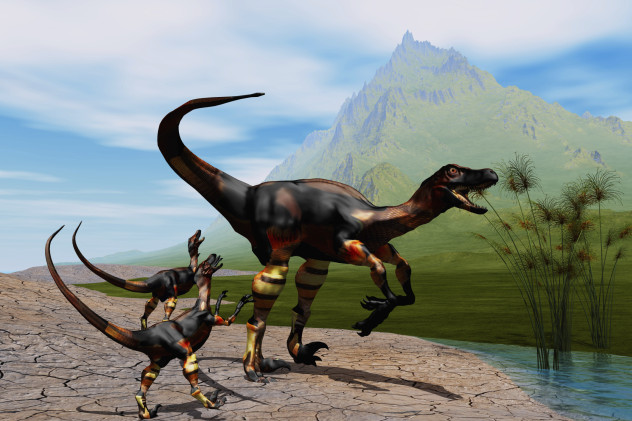
We’ve known for a while now that dinosaurs were feathered beasts, little resembling their pop culture counterparts. Mysteriously, feathers appeared long before birds or any other creature used them for flight, suggesting an alternate function: communication.
Paleontologists now think that feathers were the Armani suits of the prehistoric world—aesthetically pleasing and used to lure potential lovers, as well as to show others how much of a boss you are. Studies on birds and reptiles indicate that dinosaurs enjoyed a more complete visual range than we do, with superb color vision as well as the ability to perceive UV and shortwave light. So, a vibrantly appointed set of feathers could have marked a dinosaur as a worthy mate. The feathers also provided insulation, but that’s much less amusing than the thought of a T. rex flamboyantly strutting its stuff for a gaggle of ladies.
Hilariously, it also appears that some dinosaurs attracted mates by shaking their tail feathers, just like that old Nelly song. While studying oviraptor tail bones, researchers from the University of Alberta found that the final few vertebrae were oddly fused. These bones formed a fan-shaped structure at the end of the tail, called a pygostyle, a feature that’s now present only in birds. Further anatomical evidence suggests an underlying musculature as well as superior flexibility between the tiny vertebrae—consistent with what we’ve seen in booty-shaking birds.
7Camels Came From The Arctic
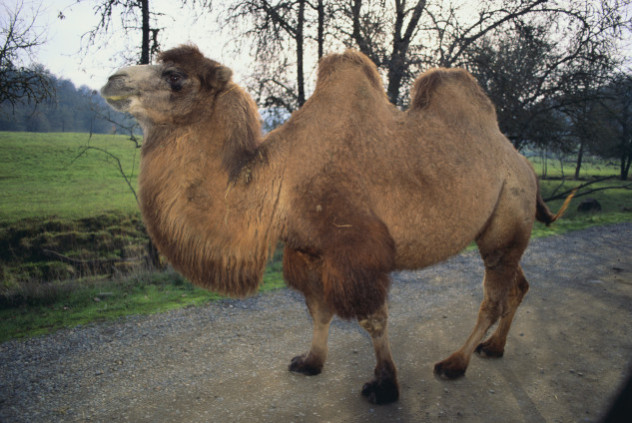
With an additional sandstorm-resistant eyelid and a knack for preserving water, camels are ideally suited for desert living. But, by analyzing collagen (which keeps for much longer than DNA) found attached to ancient camel remains, paleontologists have traced the animals’ heritage back to the High Arctic. The bones were found on Ellesmere Island in such a deteriorated condition that they were mistaken for wood. Yet, the tough fibrous proteins kept their integrity and, through collagen fingerprinting, paleontologists were able to trace camel ancestry back to modern-day North America.
The fossils show that around 3.5 million years ago, fluffy camel-progenitors inhabited one of the most inhospitably frigid places on Earth. Eventually, these giant proto-dromedaries (30 percent larger than modern versions) wised up and made their way to warmer southern climes via the land bridge that once connected Alaska to Russia.
Indeed, some of the animals’ features (like the iconic fat-storing hump) appear to have come about as adaptations to extreme winters. Similarly, large footpads that now serve camels so well on shifting and sandy terrains initially evolved as natural snowshoes for polar treks. And the long curly locks looked quite fabulous as well.
6Communal Toilets

You wouldn’t expect many parallels between humans and animals when it comes to bathroom etiquette, but herbivorous mammals have long made use of communal latrines. And mostly for the same reasons—including social and sanitary considerations—and letting potential predators know they’re dealing with a large group. However, it was unclear that non-mammalian creatures shared in this practice.
That is, until an ancient mother lode of coprolites—or fossilized poops—discovered in Argentina show that mammalian predecessors also enjoyed the benefits of designated toilets. The gigantic creatures are scientifically described as mega-herbivores, and unscientifically described as a mix between a rhinoceros and the dog-beast from Ghostbusters. These megafauna flourished long ago, and their foul remnants extend the history of group-pooping by at least 200 million years, hinting at the origin of a practice we now take for granted.
And the timeline-altering turds came in a great variety of sizes and colors. Some of these, uh, specimens were well over 30 centimeters (12 in) long and weighed in at several pounds. And, even though they were produced by beasts that grow to over 2.5 meters (8 ft) in length, it’s still quite an impressive feat during a pre–Taco Bell era. Spanning the rainbow in their distinct hues, the coprolites also provide details on ancient diets.
5Mammal Ancestors Could Have Easily Hibernated Through Extinction
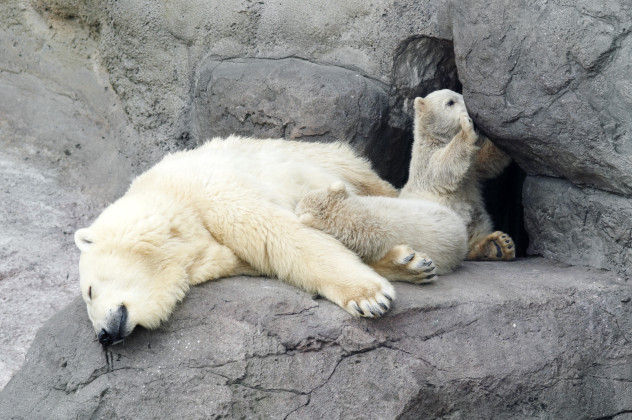
During one of the most tumultuous periods in prehistory, the tiny critters whose descendants would become us were sleeping soundly in spite of widespread carnage right outside their burrows. Quite comfortably, our most distant placental ancestor slept through a major extinction and ensured our eventual existence.
For a long time, our ancestors were small and rat-like thanks to a prolonged dinosaur reign of terror. Akin to a zoological cheat code, dinosaurs were simply too ferocious and, as long as they existed, mammals had little chance to grow past the size of a shrew. Ironically, this became our greatest asset, as the smaller animals hid away and were effectively overlooked by extinction.
And a recent study might have shown us how. Our primogenitor was an animal similar to modern tenrecs. These hedgehog-like mammals have changed little over the eons and are veritable living fossils according to lead author Barry Lovegrove. Quite anticlimactically, it appears that a propensity for extended hibernation—rather than any feat of strength or cunning—led to mammals’ ascension to the top of the food chain.
Scientists were able to track the vitals of several tenrecs (most of them got themselves eaten) as they went off to bed and essentially entered a state of metabolic inanimation. They were able to drop their body temperature significantly, and remain motionless for three-quarters of a year. As a matter of fact, one especially sleepy individual had to be dug up after a nine-month-long hibernation as it was feared the tracking device would run out of batteries.
4Old Troodon Eggs Suggest Dinosaurs Sat On Their Babies
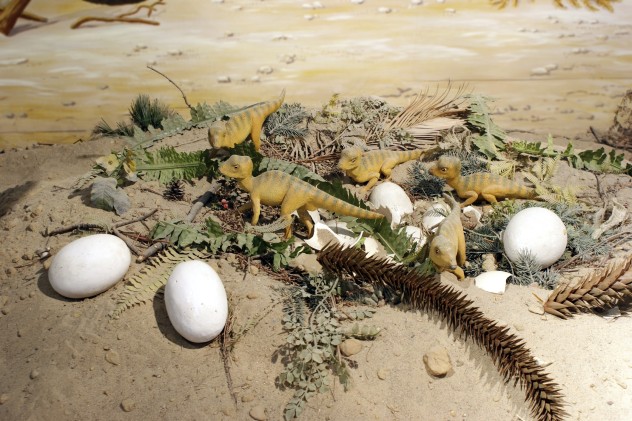
The discovery of some very old eggs suggests that at least some dinosaurs incubated their unhatched young’uns by sitting on them, like doting momma birds do today. Dinosaur eggs have been found previously, but it was unclear whether they were warmed up via rear end or by being buried in the mud a la crocodile eggs.
The Cretaceous period “nest” belonged to the diminutive bird-like Troodon, and also supports the theory that dinosaurs and birds are intimately related. Eggs that are incubated underground are specked with microscopic pores to allow passage of air and water vapor, whereas those of brooding birds are exposed and therefore moderately holed at best. As such, these particular eggs offer an evolutionary milestone because they predate the appearance of actual birds.
The anatomy of the eggs and the surrounding sediments in which they were buried 70 million years ago show that they were similar to those of modern brooders. Analyzing the fossils under magnification revealed that they were not porous enough to have been submerged in mud. Instead, they were only partially buried, leaving a good portion exposed for contact with a rear end.
3Deinocheirus Finally Revealed
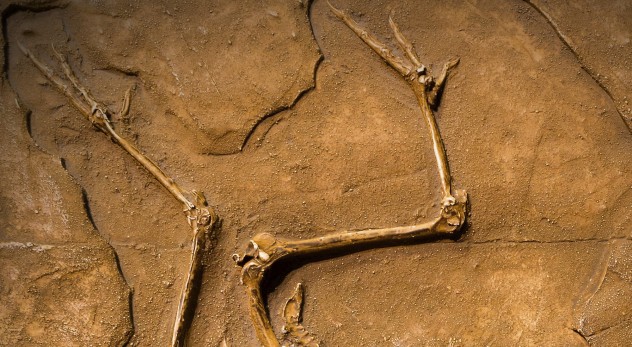
Deinocheirus mirificus was already one of the strangest dinosaurs when all we had to go on were a pair of fossilized arms. But what arms! Unearthed 50 years ago in Mongolia, these fossils were the first evidence of a prehistoric gun show, as this Cretaceous A’nold packed forelimbs 2.5 meters (8 ft) long that culminated in equally monstrous 20-centimeter (8 in) talons. The horrible appendages earned Deinocheirus its name, which roughly translates to “Holy crap!”
But a fortuitous series of events has allowed for a comprehensive reconstruction of the mysterious dinosaur; an incomplete skeleton found in 2009 was combined with other missing pieces that were recovered from poachers. Recreated by the Korea-Mongolia International Dinosaur Project, the fleshed-out Deinocheirus has been described as “totally bizarre.” It featured a long, toothless duckbill, a stupid haircut, and a giant sail of unknown function spanning its upper back.
As its arms suggested, Deinocheirus was a giant; it weighed up to 6 tons and grew up to 11 meters (36 ft) in length. In spite of its staggering size and crazy forelimbs, Deinocheirus was most likely a lumbering creature that subsisted on vegetation and small game, such as fish. Its wide dimensions and flat feet simply didn’t allow the mobility necessary to make it a truly awesome killing machine like a Tyrannosaurus rex.
2Missing Ichthyosaur Link
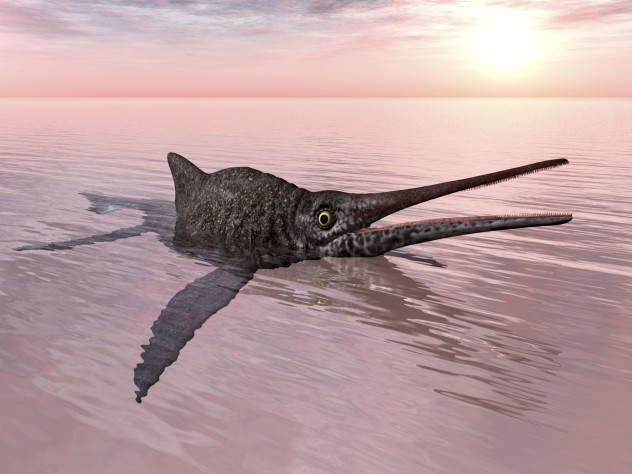
“Missing link” specimens across different strata of animal life are constantly unearthed, yet rarely do they look as ridiculously goofy as the recently discovered Cartorhynchus lenticarpus. This modest amphibious creature was about 0.5 meters (1.5 ft) long and flopped about on four flippers like some odd seal-dinosaur. More importantly, it appears to bridge the evolutionary gap between land-dwelling ichthyosaurs and their aquatic brethren.
For many animal lineages, the transitory period between seagoing and terrestrial versions is at least partially documented. However, such a link was missing in the case of ichthyosaurs, large marine reptiles that ruled the seas for 150 million years and looked like a mix between dolphins and Lapras. But, until now, paleontologists struggled to understand how and when they took to the seas. Creationists even used this opportunity to claim that the entire theory of evolution was unraveled by the missing ichthyosaur.
Yet the amphibious, seal-like Cartorhynchus shows that ichthyosaurs were initially land animals. The fat-flippered creature is an evolutionary intermediary that was well-suited for life in and out of the water, though it appears it spent a lot of time in the water. It showed up in the fossil record four million years after a major extinction and could have enjoyed life at the top of the aquatic food chain.
1Dinosaurs Did Not Have Fleas
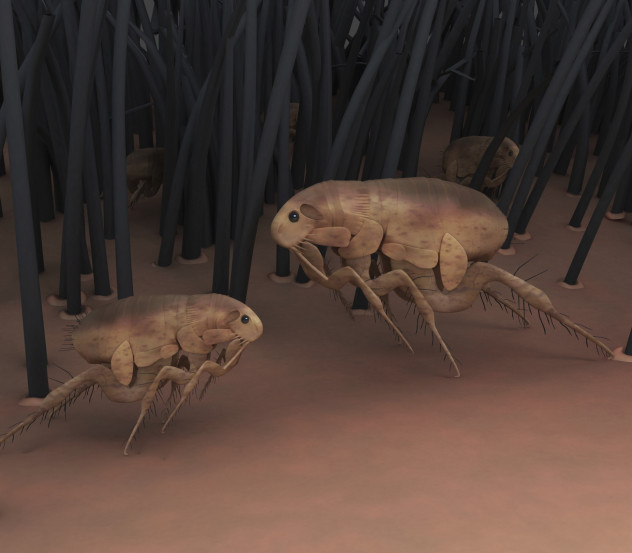
The discovery of gigantic dinosaur fleas would make for great headlines and, at least for a while, it did. Prehistoric bugs called strashilids appeared to be ancient parasites, inflicting the mighty dinosaurs with an indignity not unfamiliar to modern pet owners.
Could it be true that history’s most ruthless predators suffered from the same problems as the common sewer rat? Were the dinosaurs just giant feathered flea traps? It turns out that no, they weren’t. The team that had analyzed the strashilids retracted their initial claim, a supposition partially influenced by what appeared to be giant pincers, probably used for clinging onto tough dino hides.
But a new fossil starring two unlucky strashilids that perished mid-coitus has dispelled the theory of prehistoric blood-suckers. Immortalized in a most revealing position, it became clear that the assumed pincers were actually legs that allowed the strashilids to latch onto each other during heavy bouts of lovemaking.
Furthermore, the bugs had gills—suggesting an aquatic preference. Interestingly, it’s been revealed that strashilids literally go out with a bang. At the end of their lives, the geriatric bugs ditch their wings as they dive into the waters for one last mating frenzy.







